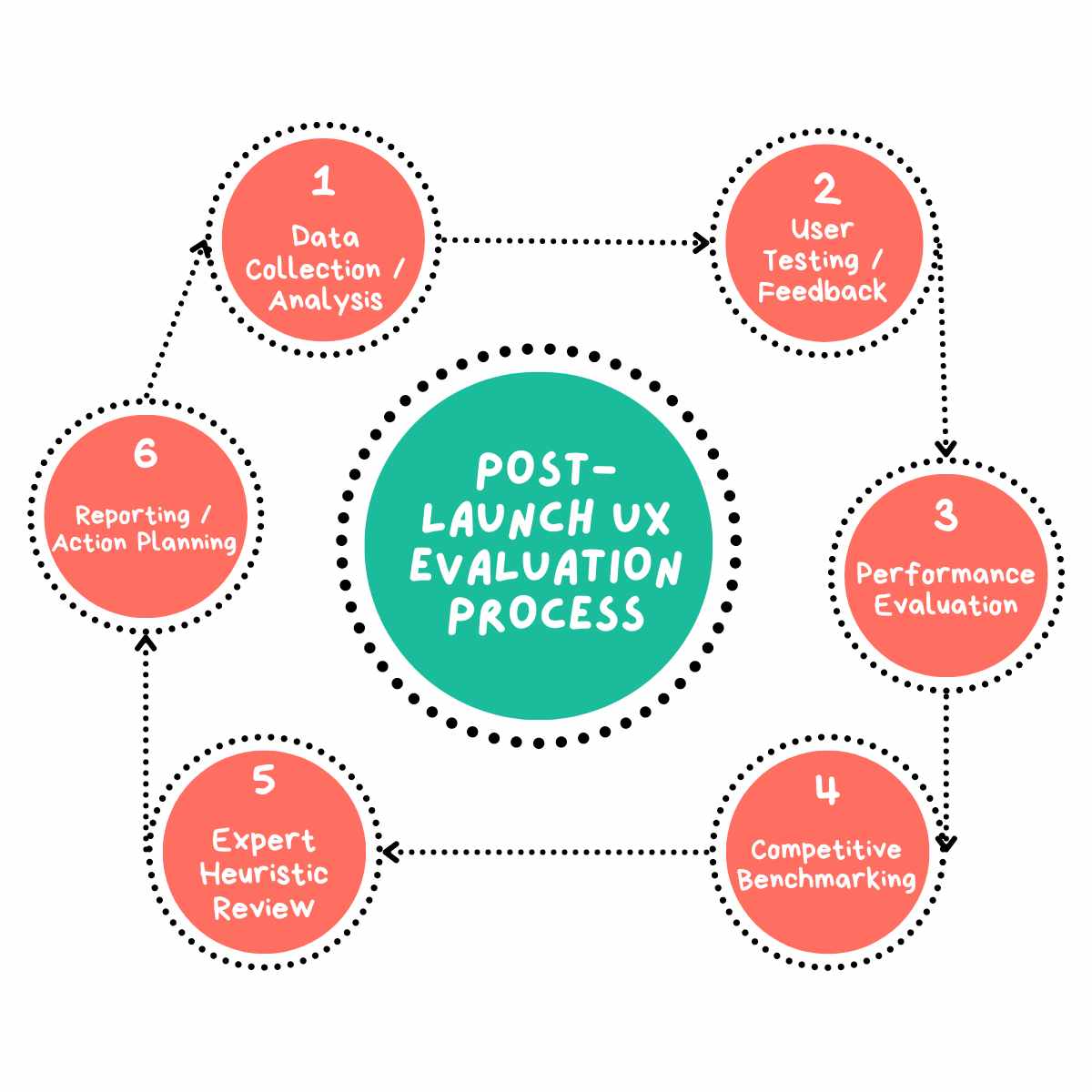Post-Launch Evaluation Reports assess the performance and user experience of newly launched digital products. These reports measure how well the product meets user needs and business objectives, identifying areas for improvement and optimisation. They provide a holistic view of the product’s success, encompassing user experience, technical performance, and business metrics.
Who needs Post-Launch Evaluation Reports?
- Marketing teams tracking user adoption
- Product managers measuring launch success
- UX teams validating design decisions
- Stakeholders assessing ROI
- Development teams prioritising fixes
A Post-Launch Evaluation systematically analyses real-world user interaction with your newly launched product or feature. Data shows conducting usability testing before launch can reduce post-release issues by up to 50% and significantly lower support costs (Techjury, 2023).
Key Components of Post-Launch Evaluation Reports:
User Exp. Analysis
Site performance metrics, feedback insights, and usability findings.
Behavior Mapping:
Journey flows, conversion paths, and interaction patterns.
Technical Assessment:
Mobile responsiveness and performance indicators.
Market Research:
Competitive benchmarking and industry standards.
Compliance Review:
Accessibility standards and platform optimisation.

Why Post-Launch Evaluation Reporting Matters
✓ Risk Reduction: Detecting and addressing usability or performance issues soon after release significantly reduces long-term maintenance costs — fixing a post-release bug can cost up to 100x more than resolving it during development (IBM Systems Sciences Institute)
✓ User Retention: Continuous optimisation after launch leads to higher user satisfaction and retention. Companies that act on user feedback post-release are 60% more likely to retain customers year over year (Forrester, The Business Impact of Customer Experience, 2021)
✓ Feature Adoption: Regular post-launch evaluation through analytics and user feedback drives adoption — product teams that track feature usage are 2.5x more likely to meet adoption goals (Pendo, State of Product Leadership Report, 2023)
Conducting structured post-launch user testing and analytics helps teams identify and fix usability issues early, improving user satisfaction and reducing costly emergency fixes (Nielsen Norman Group, 2022)
Benefits of Post-Launch Evaluation Reporting
My UI / UX Design Process

Data Collection and Analysis: I gather and analyse comprehensive data from various sources including analytics tools, user feedback channels, and technical performance monitors.
User Testing and Feedback: I conduct post-launch usability tests with representative users, analyse survey responses, and perform user interviews.
Performance Evaluation: I assess technical performance metrics, identify potential bottlenecks, and analyse server logs, load testing results, and real-user monitoring data.
Competitive Benchmarking: I compare the product against industry standards and direct competitors.
Expert Heuristic Review: I perform an expert evaluation based on established usability principles.
Reporting and Action Planning: I compile all findings into a comprehensive, actionable report tailored for different stakeholders.
Why Choose UserFirst UX for Your Post Launch Evaluation Report?
Expert Analysis
Benefit from my years of experience in UX research and user behaviour analysis
Actionable Insights
Receive clear, implementable recommendations to improve your product’s user experience
Tailored Approach
Each user persona is customised to your specific product and industry
Comprehensive Reports
Get detailed, easy-to-understand reports that bring your target users to life
Ready to Evaluate Your Digital Product’s Performance?
Whether you’ve just launched a new website, app, or digital service, a thorough post-launch evaluation is crucial for its continued success. Contact me today to discuss how my post-launch evaluation reports can help optimise your digital product’s performance and user experience.
